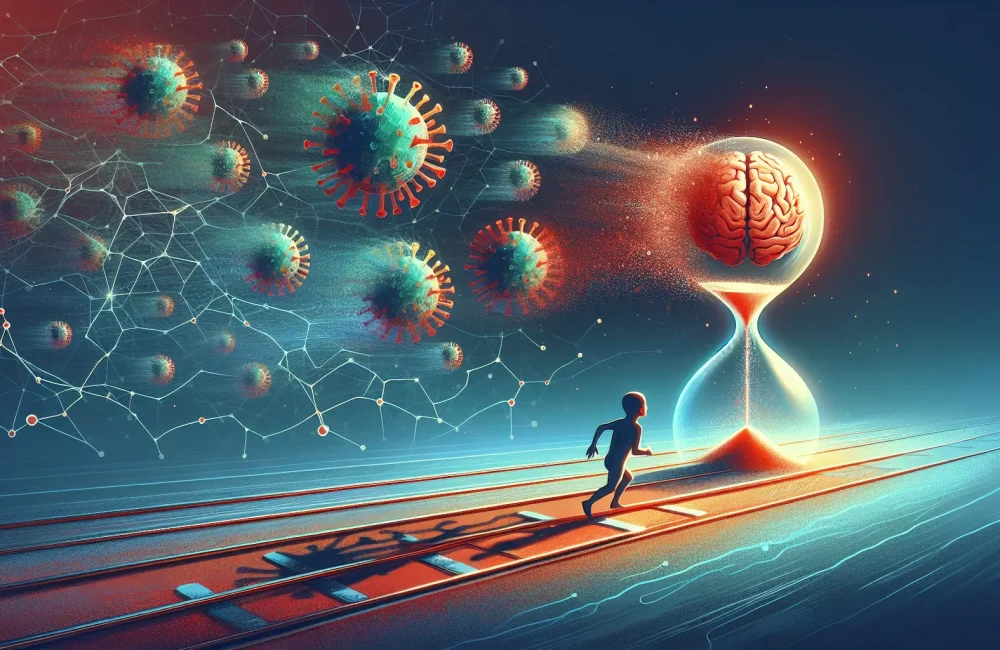By CAFMI AI From Nature Reviews Neurology
Astrocytes: Key Regulators in MS Pathology
Multiple sclerosis (MS) is a chronic autoimmune disorder primarily affecting the central nervous system (CNS), characterized by repeated episodes of inflammation that lead to demyelination and progressive neurodegeneration. Recent advances in MS research have shifted focus towards the role of astrocytes—specialized glial cells critical for maintaining ion and water balance in the CNS. Astrocytes typically regulate extracellular potassium levels and water distribution via specific channels, specifically inwardly rectifying potassium channel Kir4.1 and aquaporin-4 (AQP4). These functions are essential for maintaining a stable neuronal environment. In MS, immune system components such as autoantibodies and T cells mount an attack on these astrocytic channels, directly and indirectly disrupting their normal function. This immune assault impairs the astrocytes’ ability to maintain homeostasis, leading to increased extracellular potassium, disturbed water regulation, and inflammation, which in turn exacerbate demyelination and neuronal injury. This novel understanding positions astrocytes not just as passive victims but as active participants whose dysfunction contributes significantly to MS pathology.
Clinical Implications of Astrocyte Ion and Water Channel Disruption in MS
The disruption of astrocyte-mediated ion and water homeostasis plays a crucial role in the clinical manifestation and progression of MS. When Kir4.1 and AQP4 channels are impaired, astrocytes fail to maintain extracellular potassium and water balance, resulting in cerebral edema, increased neuronal excitability, and compromised waste clearance within the CNS. These changes impact lesion formation and contribute to chronic neurodegeneration seen in MS patients. Clinically, this manifests as worsening neurological deficits, which are often refractory to conventional treatments focused primarily on modulating immune responses and preventing demyelination. The identification of astrocyte channel dysfunction opens the door to novel therapeutic strategies targeting astrocyte functions directly. For instance, pharmacological interventions aimed at preserving or restoring Kir4.1 and AQP4 channel functions could potentially reduce edema, stabilize neuronal excitability, and mitigate neurodegenerative processes. Animal studies have supported this approach, demonstrating that protection or restoration of astrocyte channel activity can attenuate disease severity and improve neurological outcomes, suggesting a promising adjunct avenue for MS treatment.
Future Directions: Therapeutic Targeting and Patient Care Pathways
Emerging evidence underlines the potential of targeting astrocyte ion and water channels to improve clinical outcomes in MS. Therapeutic strategies could include immune-modulatory approaches to prevent autoantibody formation against astrocytic channels, along with agents designed to enhance or mimic Kir4.1 and AQP4 functions. Understanding the immune mechanisms causing astrocyte dysfunction is critical to developing these strategies. From a clinical workflow perspective in primary care and specialty settings, this knowledge guides more precise monitoring of disease progression and tailoring of treatment regimens. Early identification of astrocyte channel impairment markers might allow clinicians to anticipate exacerbations linked to ion and water imbalance, enabling timely intervention. Counseling points for patients may include explaining the role of astrocytes in disease progression, environmental and lifestyle factors potentially influencing immune attacks, and adherence to emerging treatments targeting astrocyte health. Follow-up protocols may evolve to incorporate imaging or biomarker assessments focused on astrocyte function alongside traditional MRI and neurological exams. Overall, recognizing astrocytes as both a therapeutic target and biomarker source promises to fundamentally shift MS management, providing clinicians with new tools to slow disease progression and improve quality of life for patients.
Read The Original Publication Here






